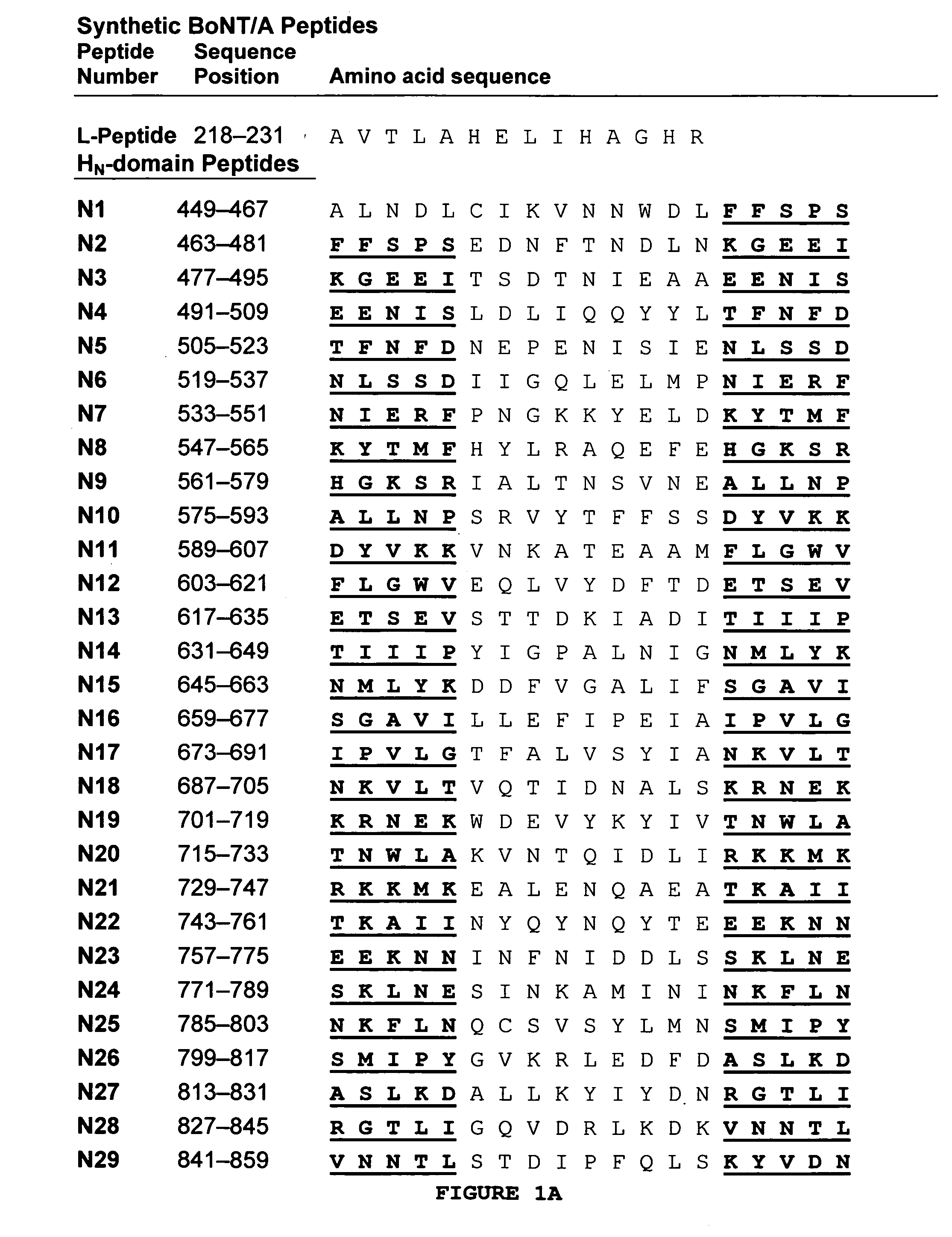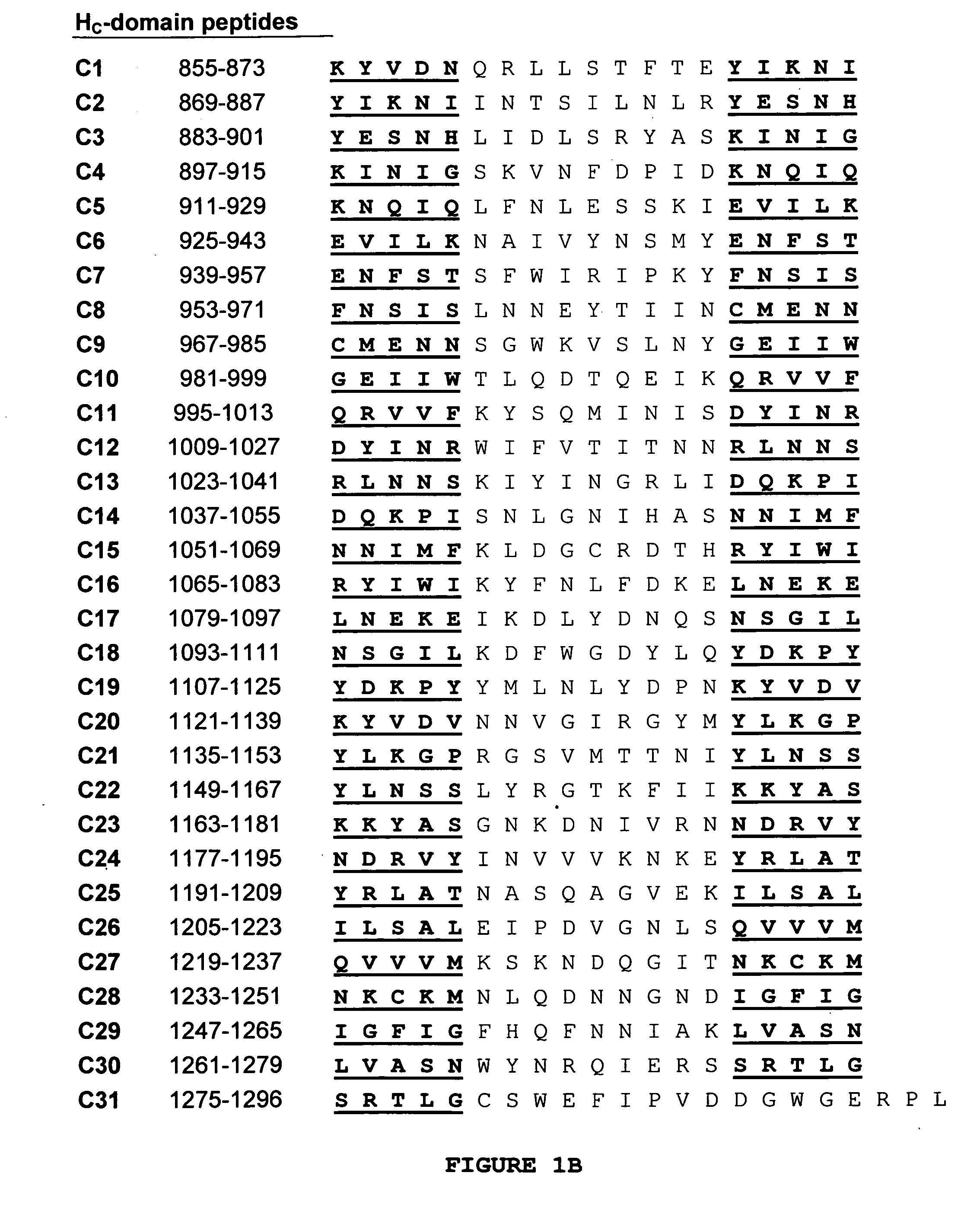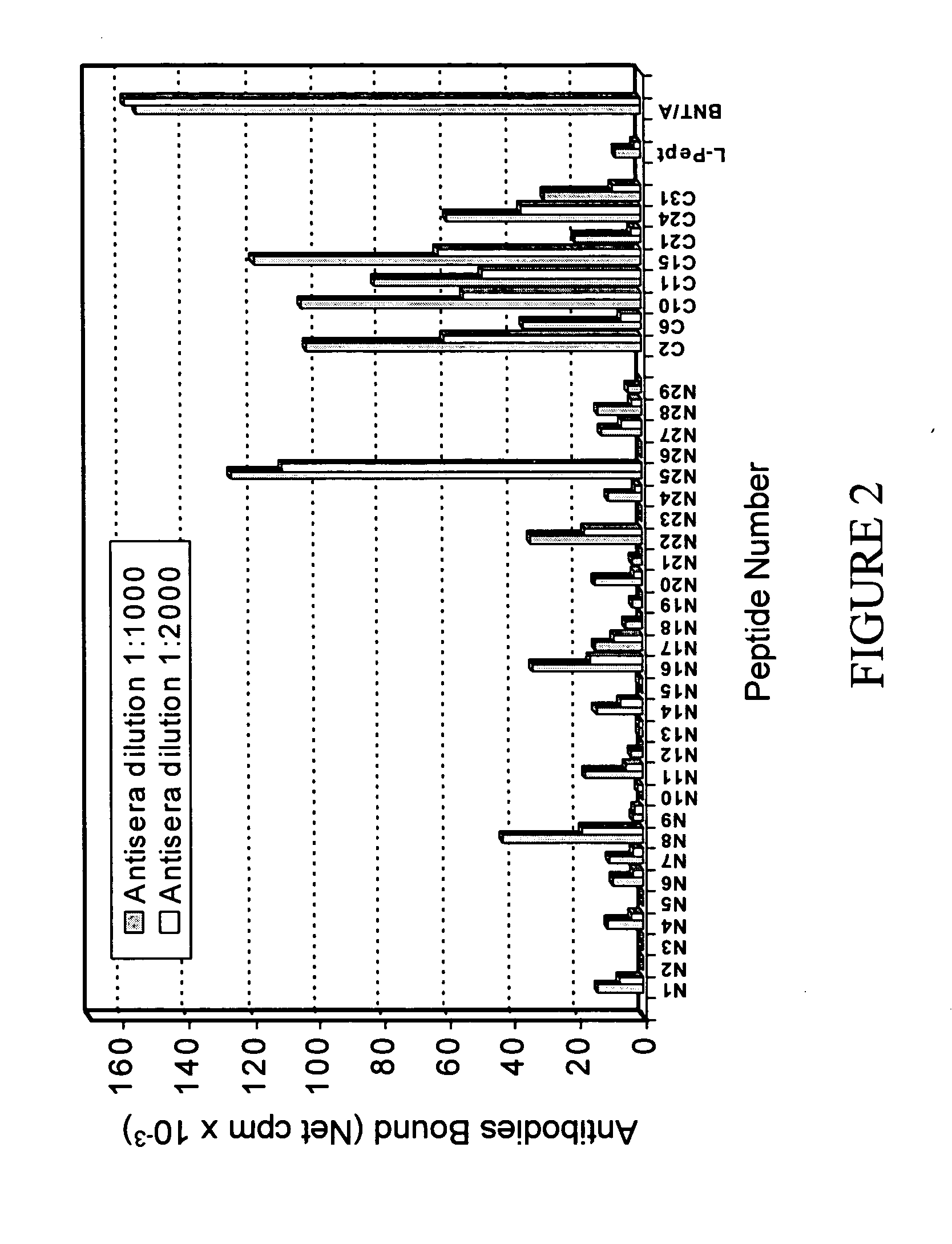Botulinum toxin a peptides and methods of predicting and reducing immunoresistance to botulinum toxin therapy
a technology of botulinum toxin and peptide, which is applied in the field of botulinum toxin a peptide and methods of predicting and reducing immunoresistance to botulinum toxin therapy, can solve the problems of blocking the transmission of electrical signals, no convenient diagnostic test available for detecting, and no treatment available, so as to effectively block the effect of protein toxins, accelerate, prolong or enhance the quality of a specific immune respons
- Summary
- Abstract
- Description
- Claims
- Application Information
AI Technical Summary
Benefits of technology
Problems solved by technology
Method used
Image
Examples
example i
Mapping of Human Anti-Pentavalent Botulinum Toxoid Antibodies Using BoNT / A Synthetic Peptides
[0160] This example shows antigenic mapping of botulinum toxin A with human anti-BoNT antisera using 29 BoNT / A synthetic peptides that encompass the H.sub.N domain of BoNT / A.
[0161] Human antisera against BoNT / A were prepared by immunizing human volunteers with a toxoid preparation made from BoNTs A, B, C, D and E as described in Atassi et al. supra, 1996. The binding assays described below were performed using IgG fractions of these antisera. For use as a control, an IgG fraction was prepared using pre-immune human serum.
[0162] For use in antigenic mapping, BoNT / A peptides were synthesized, purified and subjected to amino acid analysis by the procedure previously reported (Atassi et al., Proc. Natl. Acad. Sci. USA 88:3613 (1991)). Each peptide was found to have an amino acid composition consistent with that expected from its covalent structure shown in FIG. 1. BoNTs A and B were purchased fr...
example ii
Mapping of Mouse Anti-Pentavalent Botulinum Toxoid Antibodies Using BoNT / A Synthetic Peptides
[0169] This example describes antigenic mapping of BoNT / A with mouse anti-BoNT antisera using 29 BoNT / A synthetic peptides that encompass the H.sub.N domain of BoNT / A.
[0170] Mouse anti-BoNT antisera were prepared in outbred ICR mice by subcutaneous immunization with BoNT pentavalent toxoid. Antisera used in these studies were obtained 91 days after the first injection (Atassi et al., supra, 1996). Mice were purchased from the National Cancer Institute, and Jackson Laboratory (Bar Harbor, Me.). For use as controls, non-immune mouse sera were obtained from the animals before immunization.
[0171] Peptide binding assays were performed as described in Example I, except that the dilution for antisera of outbred mice was 1:50 and 1:200 (vol / vol). The secondary antibodies (mouse IgG (H+L)+IgM (Mu chain) were obtained from Accurate Chemical & Scientific Corporation (Westbury, N.Y.) and were diluted 1:...
example iii
Mapping of Chicken BoNT / A Toxoid Antibodies Using BoNT / A Synthetic Peptides
[0174] This example describes antigenic mapping of BoNT / A with chicken anti-BoNT antisera using 29 BoNT / A synthetic peptides that encompass the H.sub.N domain of BoNT / A.
[0175] Chicken antisera were prepared by monthly subcutaneous injection of formaldehyde-inactivated BoNT / A in Ribi adjuvant. Sera used in this study were obtained after four injections. For use as controls, non-immune chicken sera were obtained from the animals before immunization.
[0176] Peptide binding assays were performed as described in Example I, except that the dilution for chicken antisera was 1:500 (vol / vol). The secondary antibodies (rabbit antiserum against chicken IgG) were diluted 1:500 (vol / vol).
[0177] As shown in FIG. 4, chicken anti-BoNT antisera were observed to bind to several BoNT / A peptides. In particular, peptide N25 (residues 785-803 of SEQ ID NO:1) was the most immunodominant region, followed by N8 (residues 547-565 of SE...
PUM
| Property | Measurement | Unit |
|---|---|---|
| Length | aaaaa | aaaaa |
| Responsivity | aaaaa | aaaaa |
Abstract
Description
Claims
Application Information
 Login to View More
Login to View More - R&D
- Intellectual Property
- Life Sciences
- Materials
- Tech Scout
- Unparalleled Data Quality
- Higher Quality Content
- 60% Fewer Hallucinations
Browse by: Latest US Patents, China's latest patents, Technical Efficacy Thesaurus, Application Domain, Technology Topic, Popular Technical Reports.
© 2025 PatSnap. All rights reserved.Legal|Privacy policy|Modern Slavery Act Transparency Statement|Sitemap|About US| Contact US: help@patsnap.com



